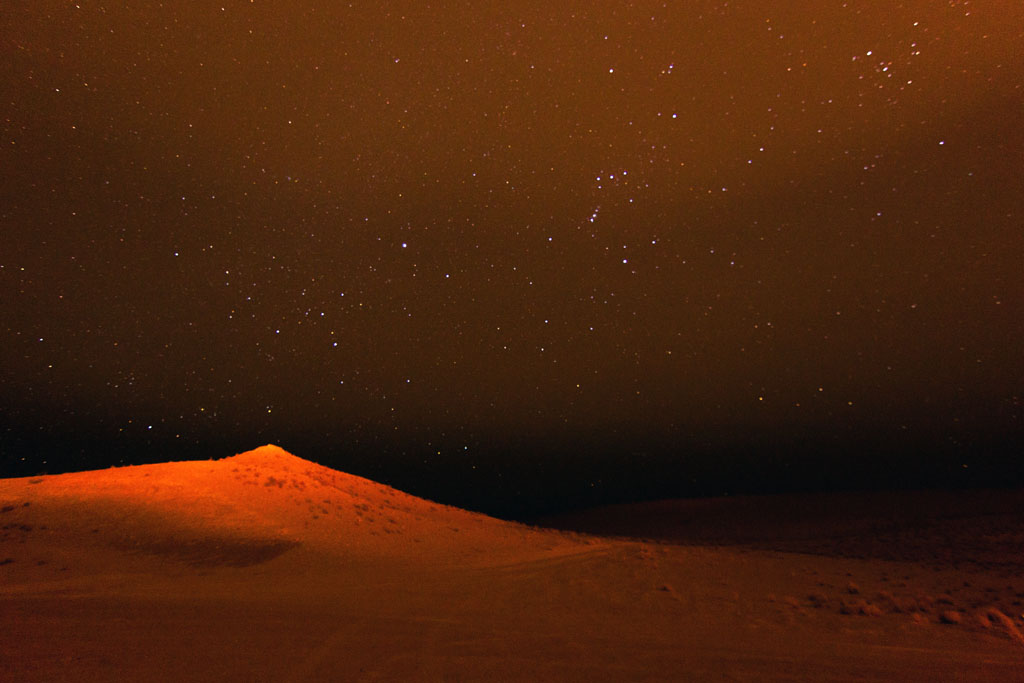
George Kourounis became the first person to set a foot on the bottom of the fiery gas crater Darvaza, located in the center of the Turkmen Karakum desert. That was eight years ago, in 2013.

The main purpose of the expedition, which was funded by the National Geographic Society (USA) and filmed by the National Geographic TV channel, was to take soil samples from the bottom of the flaming crater to find signs of life in them. Namely, extremophiles, that is, microorganisms capable of living and reproducing in extreme environmental conditions, in this case, in a hot, methane–rich environment inside the crater.

What for? Well, it's just interesting. In fact, of course, scientists had a more specifically formulated task. These microbes and bacteria can help in the search for life on other planets, outside our Solar system, where there are the same conditions.

The expedition was a great success. George got into the Guinness Book of Records for descending to the bottom of the crater, and a team of researchers after laboratory tests found several species of unusual microorganisms living there.

Since then, George has given countless interviews about the expedition to various media around the world. All this attracted even more attention of tourists to the Darvaza crater, around which infrastructure began to appear: a protective fence, campsites, a stone path, etc.

In January 2022, the Government of Turkmenistan announced its intention to extinguish the fire in the crater, which had been burning for about 5 decades. The reason is the environmental damage caused by methane emissions into the atmosphere from gas combustion.
According to George Kourounis, at that moment he was again inundated with requests from the media to talk about the situation. His comments appeared on more than 350 news sites, including the BBC, NPR, SkyNews and others.

In May 2022, the Turmen Forum and the Government of Turkmenistan invited George to speak at the International Scientific Conference "Environmental Aspects of Hydrocarbon Resources Extraction", which will be held in Ashgabat on Thursday, June 23. A separate topic at the forum will be "Prospects for managing the Darvaza gas crater".

Shortly after the invitation to speak, it was expanded with an offer to lead a new expedition to Turkmenistan, return to Darvaza, as well as explore two other nearby craters, each with its own unique characteristics, and collect samples from all three.
It is planned to descend into the so-called "water" crater by ropes on a small inflatable boat, take water samples for research, measure its depth, scuba dive and inspect the bottom, collect soil and sediment samples from it.

These water samples will be sent to eBioAtlas, a new project launched by the International Union for Conservation of Nature and the DNA monitoring organization NatureMetrics to create an electronic bio atlas of global freshwater biodiversity.
Such a complete mapping, according to scientists, will improve the monitoring, financing, management and conservation of freshwater resources. The aim of the project is to collect 30,000 water samples during the first three years, which can then be analyzed for the presence of DNA traces left in the water by species of fish, birds, amphibians and animals.

In another, "mud" crater, it is planned to go down to the bottom, where the methane-filled mud is bubbling (there is also a small amount of fire), collect samples from different parts of it, and also collect data using a thermal imaging camera. It is assumed that due to water, heat and gas, this crater has the greatest potential for extremophilic bacteria.
At the same time, there will be an opportunity to "clean up" these craters - collect garbage and so on, so that these unique natural formations are more attractive to visitors.

And finally, the crater of Darvaza. Here it is already necessary to go down to the bottom in full protective gear on fire-resistant ropes stretched across the entire span. There are also plans to collect soil samples to do DNA analysis and compare them with samples from 2013, collect thermal imaging data and measure gas levels to determine if there is any danger to visitors. The impact of tourism on the crater and its surroundings will also be documented.

So, George Kuranis intends to undertake another extreme expedition to the Karakum Mountains. Its preliminary dates are scheduled for autumn 2022. In the meantime, we are waiting for his speech at the forum "Environmental aspects of hydrocarbon resources extraction", where he promises to make a presentation of materials about his descent into the Darvaza crater. And share your impressions of what it's like to search for "alien" life right here on Earth.

George Kourounis is a researcher, "storm chaser" and TV presenter who has devoted 25 years to documenting the extreme force of nature and natural phenomena around the world, including tornadoes, hurricanes, volcanoes, avalanches and the effects of climate change.
He holds the title of Resident Researcher of the Royal Canadian Geographical Society and is a member of the Society of Environmental Journalists and the Canadian Meteorological and Oceanographic Society.
ORIENT news
Photos courtesy of George Kourounis
